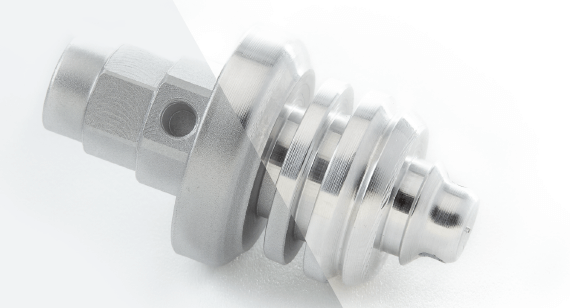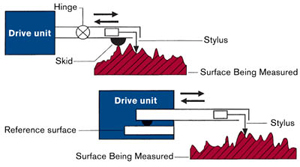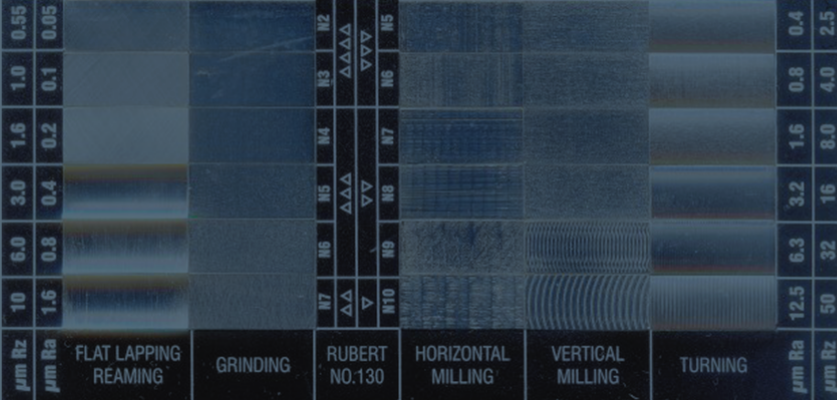Table of Contents
Paragraph 1:
Are you wondering if CMM can measure the surface finish of your products? You are not alone. Many people wonder if CMM, a coordinate measuring machine, can measure the surface finish of their products or if it is only capable of measuring dimensions.
Paragraph 2:
The answer is yes, CMM can measure surface finish. In fact, surface finish measurements are becoming an increasingly common feature on CMMs. In this article, we will explore how CMMs can measure surface finish and what factors you should consider when choosing a CMM for your surface finish measurement needs.
A Coordinate Measuring Machine (CMM) can measure surface finish, but it requires a specialized probe known as a surface finish probe. This probe has a diamond stylus that moves across the surface of the object being measured, measuring the roughness and texture of the surface. While not all CMMs are equipped with this type of probe, those that are can provide accurate surface finish measurements in addition to dimensional measurements.
Can CMM Measure Surface Finish?
CMM or coordinate measuring machine is an advanced measuring tool used in various industries to measure the dimensions of a workpiece. It is a highly accurate machine that can measure the position and orientation of an object in three-dimensional space. CMM is widely used in the manufacturing industry to ensure that the parts produced meet the required specifications. However, one question that often arises is whether CMM can measure surface finish. In this article, we will explore this question in detail.
Understanding Surface Finish
Surface finish refers to the texture, roughness, and waviness of a surface. It is an essential parameter in the manufacturing industry as it influences the functionality and aesthetics of a product. Surface finish is usually measured in terms of Ra, Rz, Rmax, and other parameters. The measurement is taken using a surface roughness tester, which has a stylus that moves over the surface of the workpiece, measuring the height variations.
Can CMM Measure Surface Finish?
The simple answer is no. CMM cannot measure surface finish directly. CMM is designed to measure the dimensions of a workpiece in three-dimensional space. It uses a probe that touches the surface of the workpiece to take measurements. However, the probe is not sensitive enough to measure the small height variations that make up the surface finish.
Alternative Methods to Measure Surface Finish
There are several methods to measure surface finish. The most common method is to use a surface roughness tester, as mentioned earlier. This method can measure the surface finish parameters accurately. Another method is to use an optical profiler, which uses light to measure the height variations on the surface of the workpiece. This method can provide a three-dimensional image of the surface, making it easier to understand the surface finish.
The Benefits of Using CMM
Although CMM cannot measure surface finish, it is still an essential tool in the manufacturing industry. CMM can measure the dimensions of a workpiece accurately, ensuring that the parts produced meet the required specifications. Here are some benefits of using CMM:
Accuracy
CMM is a highly accurate measuring tool. It can measure the dimensions of a workpiece with an accuracy of up to 0.001mm. This level of accuracy ensures that the parts produced meet the required specifications.
Efficiency
CMM can measure the dimensions of a workpiece quickly and efficiently. It can take measurements in a matter of seconds, which is much faster than other measuring tools.
Automation
CMM can be programmed to take measurements automatically. This feature makes it ideal for mass production, where a large number of parts need to be measured quickly and accurately.
CMM vs Surface Roughness Tester
CMM and surface roughness testers are two different measuring tools that serve different purposes. CMM is used to measure the dimensions of a workpiece, while a surface roughness tester is used to measure surface finish. Here are some differences between the two:
Measurement Parameters
CMM measures the dimensions of a workpiece in three-dimensional space, while a surface roughness tester measures the height variations on the surface of the workpiece.
Accuracy
CMM is more accurate than a surface roughness tester. CMM can measure the dimensions of a workpiece with an accuracy of up to 0.001mm, while a surface roughness tester has an accuracy of around 0.01mm.
Measurement Time
CMM can take measurements quickly and efficiently, while a surface roughness tester takes longer to measure the surface finish parameters.
Cost
CMM is more expensive than a surface roughness tester. CMM is a complex machine that requires specialized knowledge to operate and maintain.
Conclusion
In conclusion, CMM cannot measure surface finish directly. However, it is still an essential tool in the manufacturing industry as it can measure the dimensions of a workpiece accurately. To measure surface finish, a surface roughness tester or an optical profiler should be used. Understanding the differences between CMM and surface roughness testers is crucial in choosing the right measuring tool for a particular application.
Frequently Asked Questions
Here are some commonly asked questions about whether CMM can measure surface finish:
Can CMM measure surface finish?
Yes, a CMM can measure surface finish, but it requires additional equipment beyond the standard CMM setup. The most common method for measuring surface finish is to use a stylus-based probe, which is mounted onto the CMM. This probe is then used to scan the surface of the part, and the resulting data is used to calculate the surface finish. However, it is important to note that the accuracy of the measurement can be affected by factors such as the contact force of the probe and the orientation of the surface being measured.
What are the benefits of using a CMM to measure surface finish?
Using a CMM to measure surface finish has several benefits. Firstly, it allows for a more objective and accurate measurement than traditional methods such as visual inspection. Additionally, CMMs can measure surface finish on complex parts that would be difficult to measure manually. Finally, the use of a CMM can help to reduce measurement time and increase productivity.
What types of surface finish can CMM measure?
CMMs can measure a variety of surface finishes, including roughness, waviness, and form. Roughness is the most commonly measured surface finish, and is defined as the irregularities on the surface of a part. Waviness refers to the more pronounced deviations from the nominal surface, and form refers to the shape and contour of the surface itself.
What are the limitations of using a CMM to measure surface finish?
Despite the benefits of using a CMM to measure surface finish, there are some limitations to be aware of. Firstly, the accuracy of the measurement can be affected by factors such as the contact force of the probe and the orientation of the surface being measured. Additionally, it can be difficult to measure surface finish on parts with complex geometries or surfaces that are difficult to access with the probe. Finally, the cost of the equipment required to measure surface finish with a CMM can be a significant investment.
How can I ensure accurate surface finish measurements with a CMM?
To ensure accurate surface finish measurements with a CMM, it is important to follow best practices for CMM operation and maintenance. This includes regularly calibrating the machine and ensuring that the probe is properly aligned and functioning correctly. Additionally, it is important to carefully select the appropriate stylus for the surface being measured, and to ensure that the contact force is appropriate for the surface finish being measured. Finally, it is important to carefully analyze the data and account for any factors that could affect the accuracy of the measurement.
In conclusion, CMMs are invaluable tools for measuring dimensional accuracy on machined parts. However, when it comes to measuring surface finish, there are limitations to what CMMs can achieve. While they can provide some insight into the roughness of a surface, other specialized instruments such as profilometers or surface roughness testers are better suited for measuring surface finish.
It’s important to note that CMMs are still an essential part of the quality control process for machined parts. They provide reliable and accurate data on dimensional accuracy, which is vital for ensuring that parts meet the required specifications.
In summary, CMMs are excellent at measuring dimensional accuracy but are limited in their ability to measure surface finish. To get the most accurate measurement of surface finish, it’s essential to use specialized instruments designed for this specific purpose. However, CMMs remain essential in the quality control process, and their use should not be overlooked.
Request a quote today!
[contact-form-7 id="1578" title="Contact form"]
Please compress the file into a ZIP or RAR file before uploading. Alternatively, send through your RFQ by email.
enquires@unitymanufacture.com





